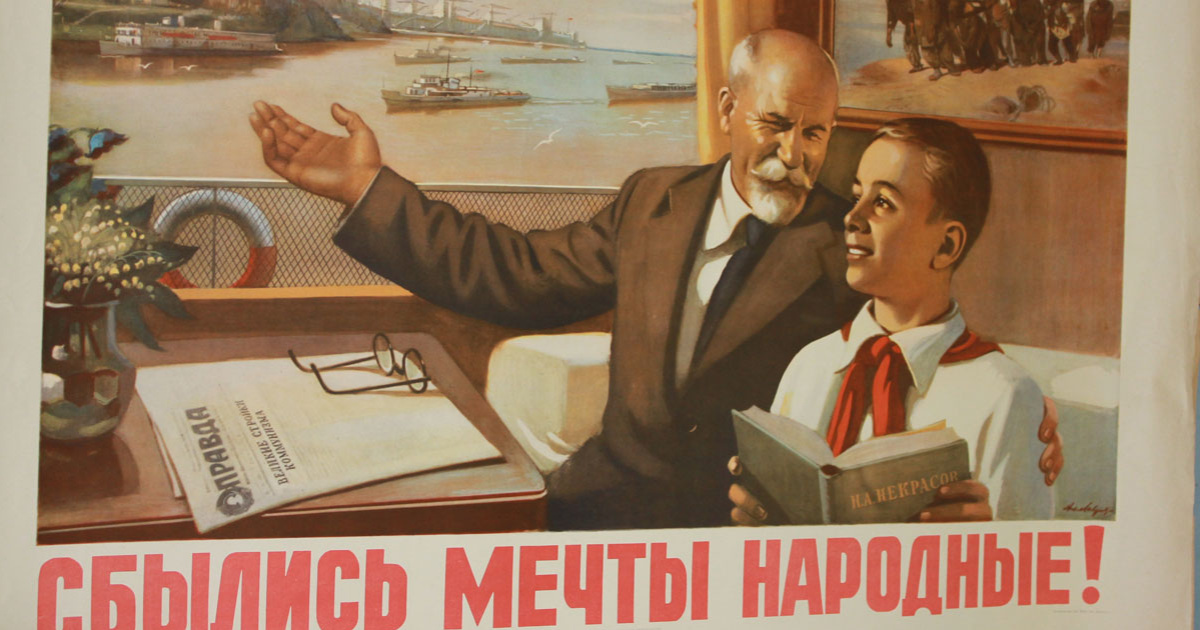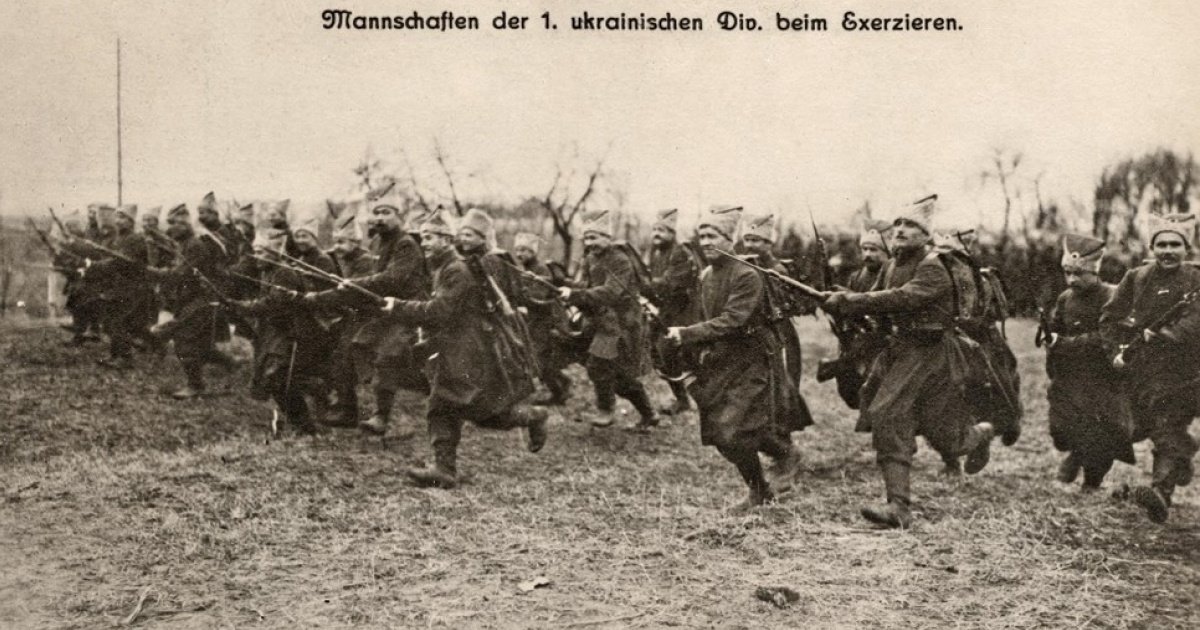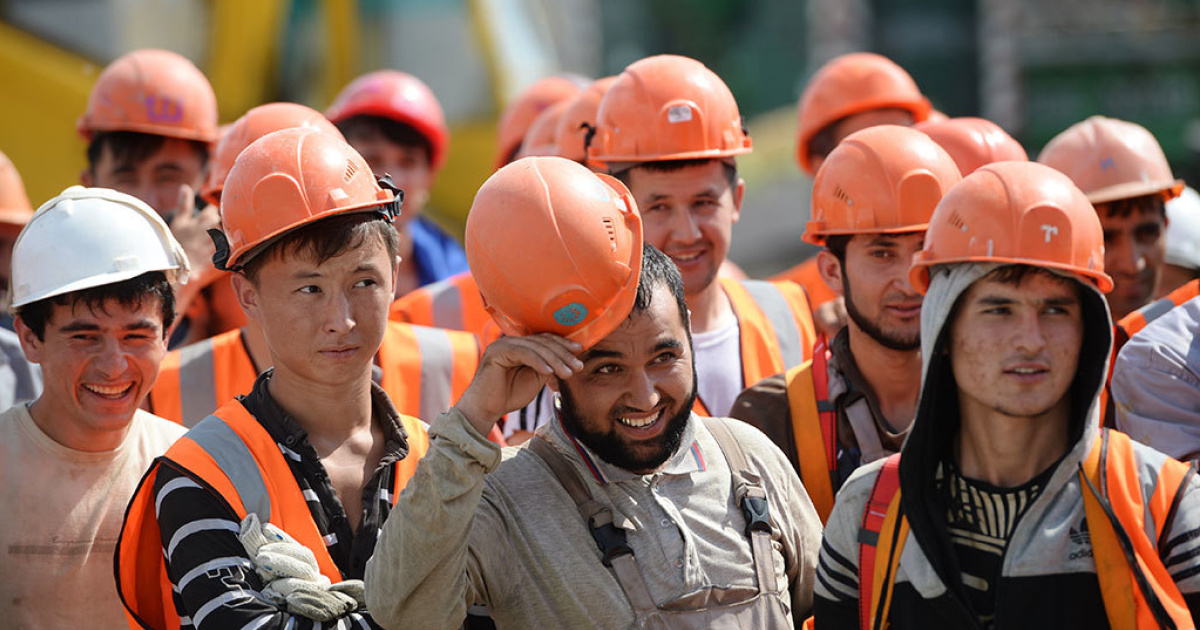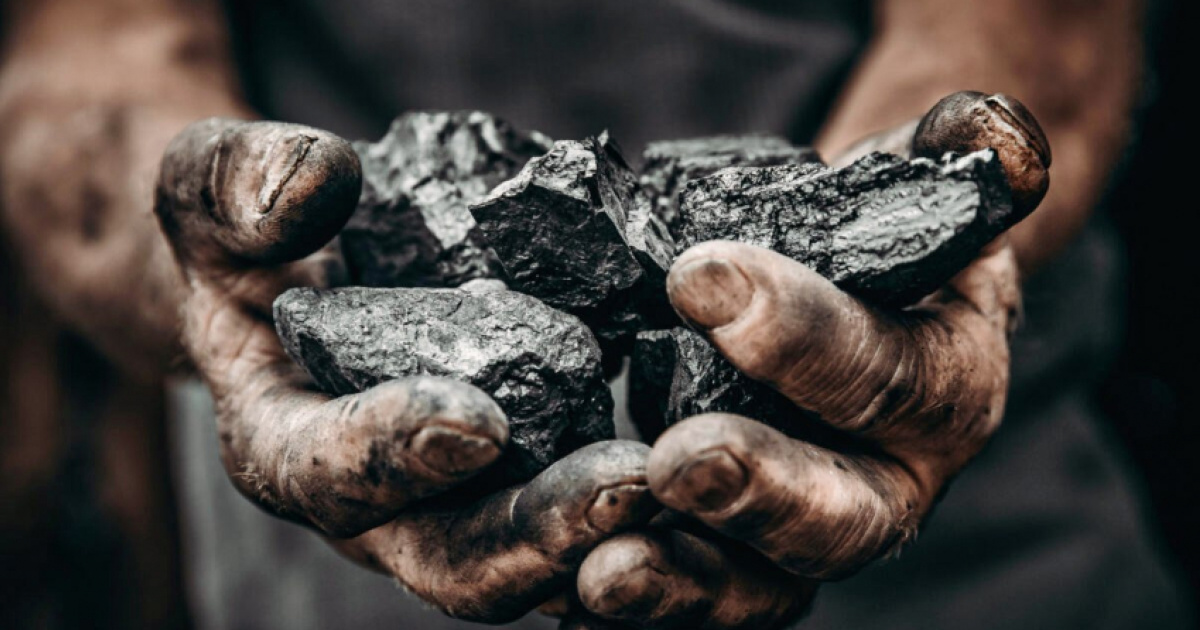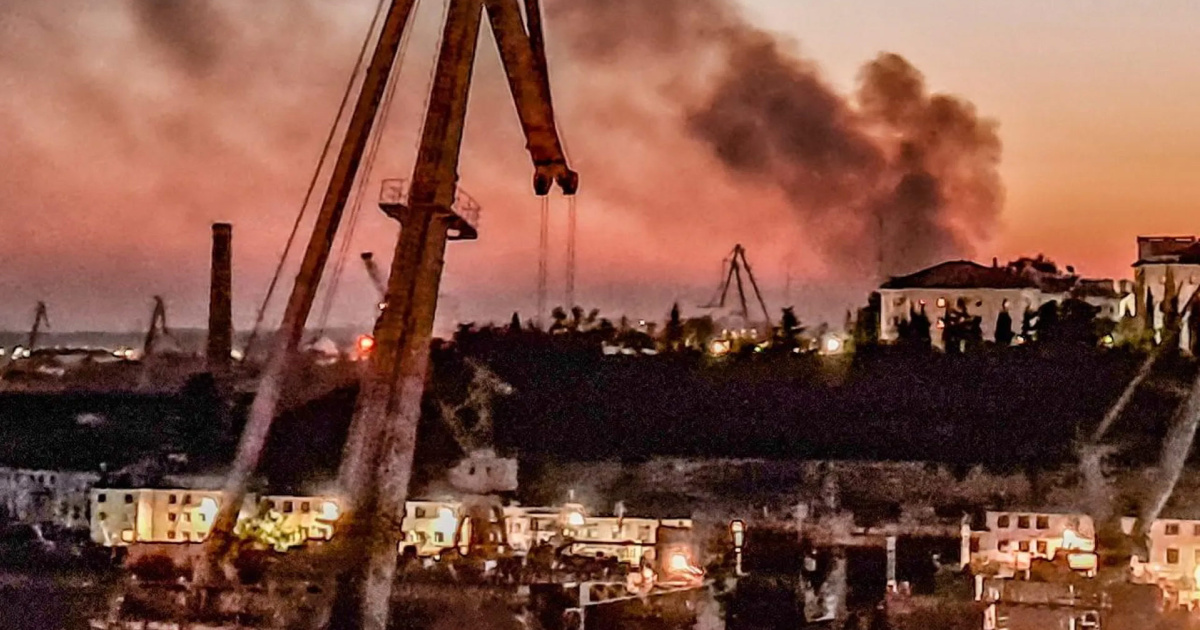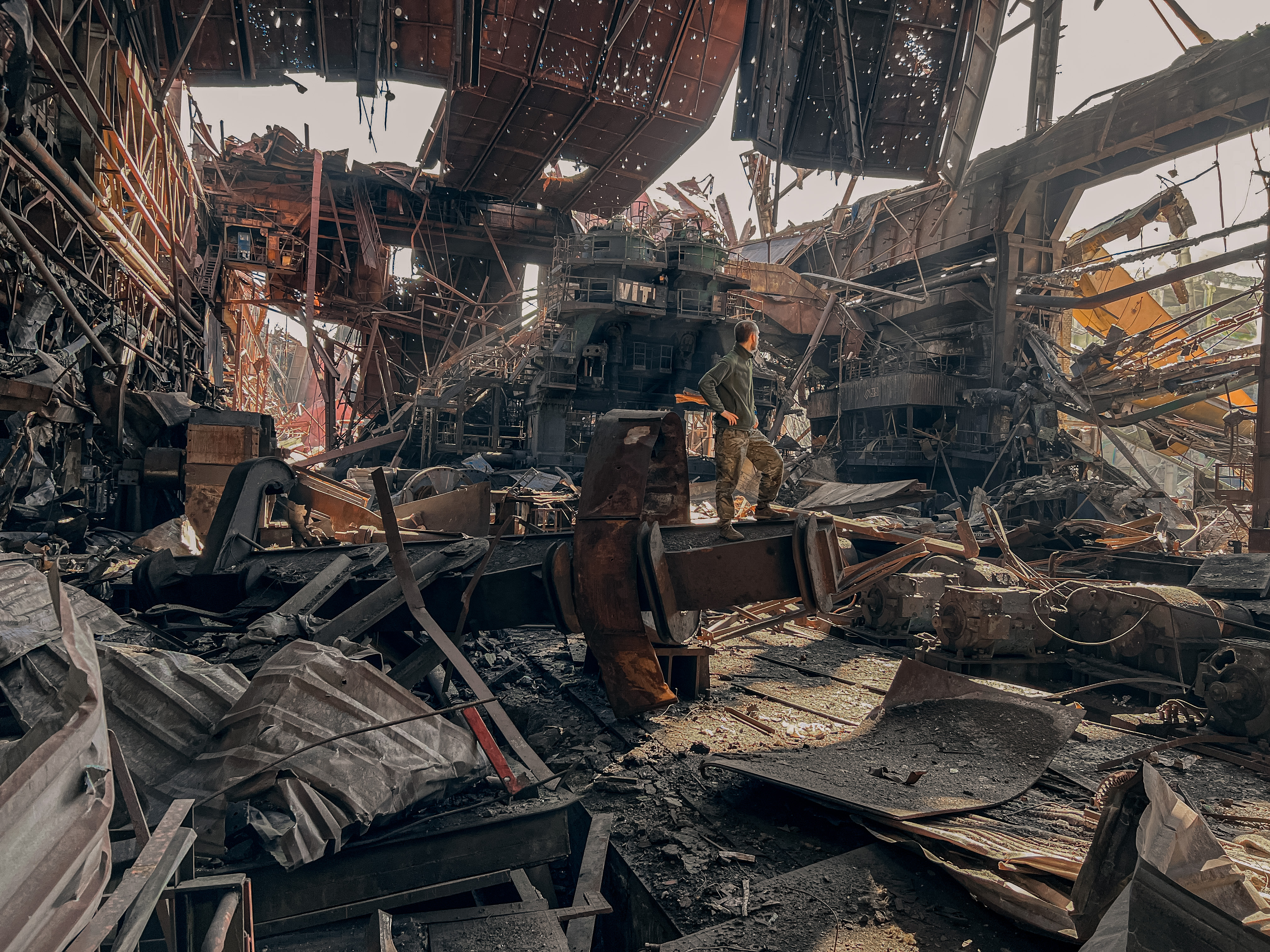
Donetsk collaborators have extended the life of the "Ministry of Economic Development of the DNR" for six months. It will continue to exist until July 1, according to the decree of the so-called "head of the DNR" D. Pushilin, issued in late December 2023. Initially, it was expected that the pseudo-department would be liquidated by January 1. In Luhansk, a similar resolution has been issued regarding the "Ministry of Economy of the LNR".
The reason, formulated in official bureaucratic slang, is vague: "due to the formation of a new subject within the Russian Federation – the Donetsk People's Republic and the determination of the system and structure of the executive authorities of the region".
In reality, it can be said more simply and clearly: due to its uselessness. Because, in fact, there is no economy as such in the occupied territory of Ukrainian Donbas captured by the russian invaders.
This doesn't stop high-ranking representatives of the aggressor country and their local satellites from continuing to make promises of a "bright future" for the "new regions".
Decarbonization of Donbas: the kremlin's recipe
While leading world economies (USA, China, EU) take the first steps towards "greening" (abandoning coal use to reduce greenhouse gas emissions into the atmosphere), the occupiers have almost completely decarbonized the controlled part of the Donetsk and Luhansk oblasts.
In September 2023, russian Minister of Energy N. Shulginov announced that the number of coal mines in the "DNR" and "LNR" will be reduced from 114 to 15.
That is, Donbas has lost its economic backbone under the boot of the russian invaders. Coal mining, which was the region's hallmark for almost a century and a half, has become a thing of the past, relegated to the status of a museum exhibit.
Against this background, the comment by the "head of the LNR" L. Pasechnik looks particularly cynical: "The proposed reform by the Russian Ministry of Energy will allow reviving and developing the coal industry of Luhansk". It's something akin to "war is peace, freedom is slavery" and so on.
It should be clarified that the announced "reform" by the russian Ministry of Energy does not imply any new steps to eliminate the coal industry in the Donbas. It simply formalizes the existing "achievements" on paper.
As of 2020, there were only 6 active mines left in the "LNR". As a result of such "restructuring," according to local media, over 32,000 miners lost their jobs. By the end of 2022, only the "Komsomolets Donbasu" mine, producing over 1 million tons of coal, was more or less operating In the "DNR".
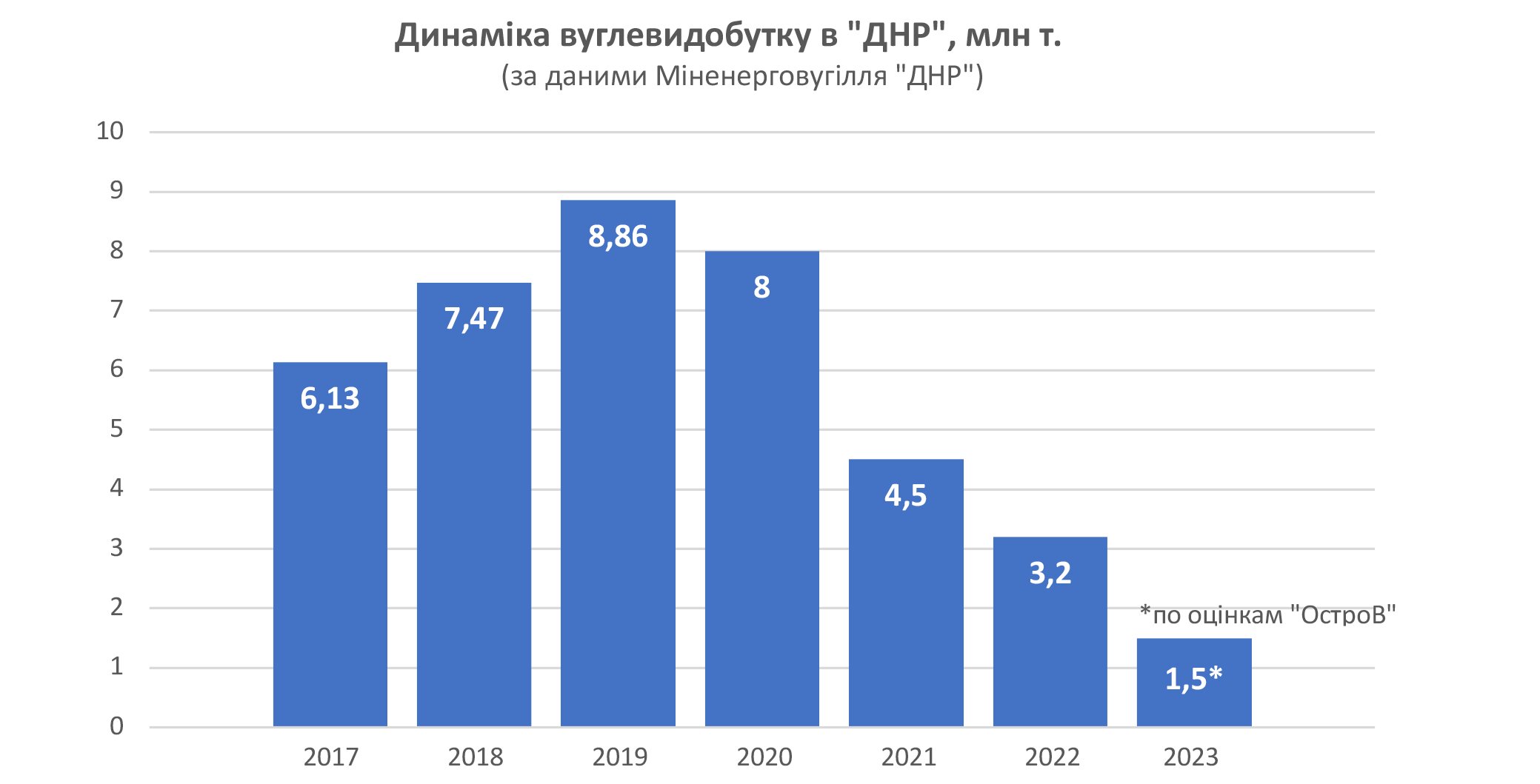
Dynamics of coal production in the "DNR", million tons (according to the so-called Ministry of Energy and Coal of the "DNR")
The agony of the coal industry in the occupied territory of the Donetsk oblast is vividly illustrated by the infographic above. In addition, it should be noted that even according to official data from the "DNR" officials, the equipment at all still operating mines has reached 85% wear and tear.
The "85%" indicator means a pre-crisis state. In simple terms, the equipment at these facilities can fall apart at any moment.
There is no need to talk about compliance with safety standards and labor protection for miners in such conditions. Neither local officials nor their moscow masters seem to be concerned about it at all.
Therefore, no funds have been invested or are being invested in the modernization and repairs of the mines. This only exacerbates the situation, leading to a complete and final collapse.
Earlier, OstroV noted that the issue of coal transformation in the Donbas is relevant for Ukraine. In this context, the German experience was analyzed, and the possibilities of its application in our reality were considered. It was emphasized that the cornerstone of the reform is retraining and new employment for workers from closing mines.
Occupying authorities didn't bother much with such issues. Through forced mobilization, they simply drove miners into trenches, following the classic approach: "when there's no person, there's no problem".
As L. Pasechnik reported in a meeting with putin in December 2022, 58% of coal miners in the "LNR" (at that time) had been mobilized. According to his statement, there were no longer enough people to work even in the remaining mines.
In addition to this, there is a massive departure of miners for permanent (non-rotational) work in russia. According to separatist media, before the start of the major war, over 2,000 people from Donetsk had moved to the Yakutian town of Neryungri to work in the mines of the Kolmar company. By the end of 2022, the shortage of workers in the "DNR" mines was estimated by the local "Ministry of Energy" to be 5-6 thousand people.
It is worth to note the "humanism" of the occupiers. The actual deportation of Donbas residents was conducted more "mildly" than under Stalin. In the kremlin, they realized that there was no point in herding people into trains at gunpoint and sending them to harsh distant lands with a convoy. It was enough to simply pay miners 5-7% of their wages for several years. And they would leave on their own. That's essentially what happened.
It's not surprising that official figures in russia or the occupied territories have not disclosed coal production data in the "DNR" and "LNR" for 2023. It can be assumed that at best, it is no more than 1.5 million tons.
In a nutshell, nothing remains of the Donbas coal industry. It has been decarbonized. But the kremlin didn’t have time to "change its manuals" in this regard. Propagandist media continue to assure readers that "Donbas coal is still needed by many regions of Greater Russia".
Final "greening"
Simultaneously, with the abandonment of coal, the world's leading economies are transitioning to new steel production technologies, phasing out blast furnaces and converter production. In this context, the "successes" of kremlin "ecologists" and collaborators should be evaluated as "50/50".
They completely closed the operating blast furnaces and converters at metallurgical enterprises in Donbas. However, new electric arc furnace capacities did not appear as replacements. And they certainly won't appear under the conditions of occupation.
Since the times of John Hughes, the metallurgy of Donbas has been based on two main pillars: local coal and iron ore from the Kryvyi Rih region. We've already discussed the challenges related to coal. As for iron ore, supplies from Kryvyi Rih have been completely cut off since 2017, for quite understandable reasons.
There were attempts to transport ore from the mining and processing plant "Karelsky Okatysh", owned by the sanctioned russian oligarch A. Mordashov. However, these attempts were quickly abandoned.
Firstly, it was not very profitable (the aggressor state, through the sanctioned company "russian Railways", had to subsidize such transportation at a discounted tariff). Secondly, the buyers turned out to be untrustworthy, "forgetting" to pay for the received ore.
In addition to these challenges, the metallurgical industry faces the same problems as the coal industry: the pre-crisis state of equipment (for the same reasons) and a shortage of skilled workers.
The occupiers forced not only Donetsk miners but also metallurgists into the trenches. These workers, who had not been paid for years, left for russia long ago, not just for temporary work but permanently.
Despite the fact that the industry's verdict has, essentially, been executed, a special session on the "development of the metallurgy of Donbas" took place on November 29th of last year in the russian federation Council.
This information was presented in that way by russian and separatist media, citing V. Nikolaenko, the "Chairman of the Committee on Industry and Trade of the DNR People's Council ".
According to him, local authorities have prepared a regulatory framework for the rapid modernization of metallurgical enterprises in Donbas – a law on industrial policy, as well as subordinate acts on the development of special and free economic zones in the "DNR" and "LNR".
How this will help resolve the issues for plants that lack both coal and iron ore, and have a workforce shortage, but are burdened with billion-ruble debts, was not specified by V. Nikolaenko. For the collaborators, it doesn't seem to matter.
From the comments of another participant in the meeting, V. Vasilyev, the "Deputy Prime Minister of the DNR", it can be inferred that representatives of the local "elite" went to moscow with a single goal: to try to "extract" money from the masters for further successful "development".
"For 9 years, the industry of the Donetsk People's Republic has been underfunded. Now we need to make the industrial sector of the republic not just one, but two or three steps forward. But! This requires a colossal amount of investment – hundreds of billions of rubles. Essentially, Donbas needs a special infrastructure project tailored to the industrial needs of the Donetsk People's Republic", - declared V. Vasilyev.
With a 100% certainty, it can be assumed that they failed to beg for money. An illustrative example of the occupiers' attitude towards the seized territories is putin's promise to build high-speed railways to Donetsk and Luhansk, mentioned during the December IV Railway Congress.
However, at the end of the year, the russian government published the infrastructure development strategy until 2030. It turned out that it indeed includes the construction of 4 high-speed highways to St. Petersburg, Yekaterinburg, Adler, and Minsk. There is not even a mention of roads to Luhansk and Donetsk.
In other words, "there is no money, but you should hold on". The kremlin's top officials are capable of "mastering" a colossal amount of investment without the "help" of Donetsk and Luhansk collaborators.
By the way, the mentioned meeting in the Federation Council was officially called "Current Issues in the Activities of Metallurgical Enterprises of the DNR and LNR". This is important because "current issues in activities" and "development" are far from being the same.
During the meeting, it was mentioned, among other things, about the shipment of a batch of rolled metal products from the Alchevsk Metallurgical Complex (AMC) to the Uralvagonzavod for an amount exceeding 2 billion rubles at the end of 2022.
This fact was sensationalized by propagandist media as confirmation of the theses that "the industry of the new regions is alive and thriving" and "the industry of the DNR-LNR successfully cooperates with Russian enterprises".
Since the media outlets are propagandist, no one was bothered that the volume of supplies was strangely mentioned only in monetary terms. After all, billions of rubles sound impressive.
However, if we turn to the reference data of the largest russian metal trading exchanges, we can easily find out that the average cost of hot-rolled products (similar to what the AMC produced) in russia in 2022 was 69.5 thousand rubles per ton.
Thus, approximately 29 thousand tons of products were shipped. Now, let's recall that in the pre-war year of 2013, the AMC produced 3.8 million tons of rolled products, and the picture becomes clear.
It is evident that during the raid on the territory of the non-operating plant, local law enforcement semi-bandits stumbled upon a forgotten warehouse with rolls of pre-war production. And they figured out how to make money on it.
These are the "current issues in the activities of metallurgical enterprises of the DNR and LNR" that were discussed at the meeting. To "correctly solve" them, there is indeed no need to have an entire bureaucratic department with the loud name "Ministry of Economic Development" in Donetsk and Luhansk.
By Vitaliy Krymov, OstroV
